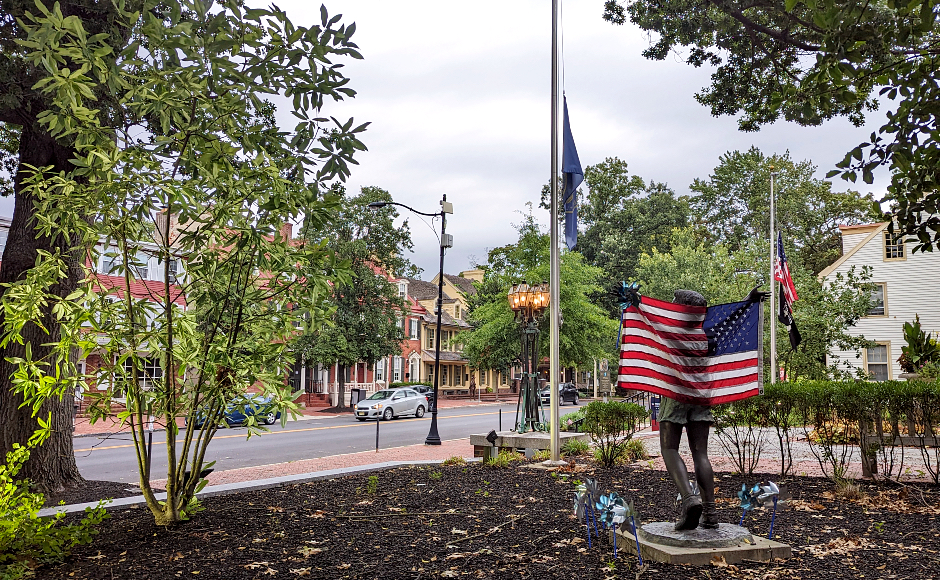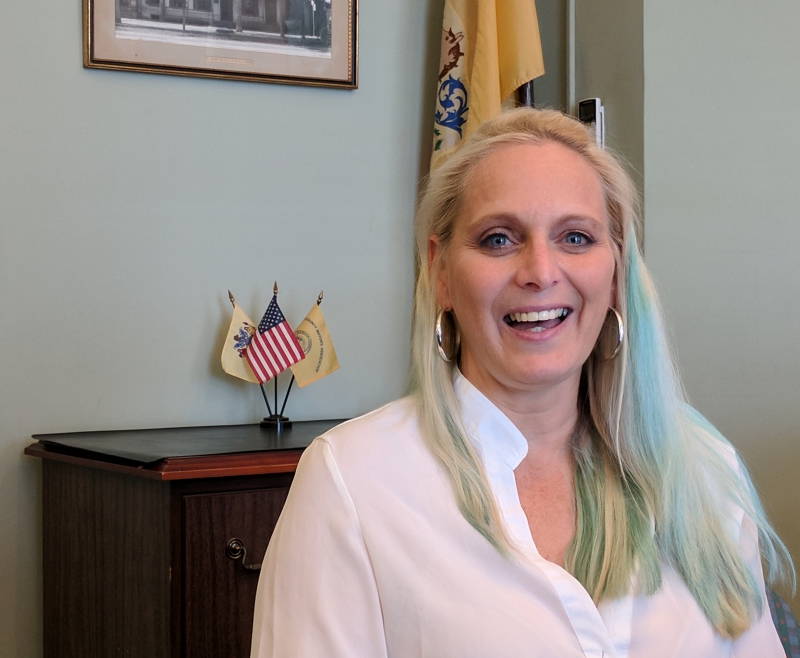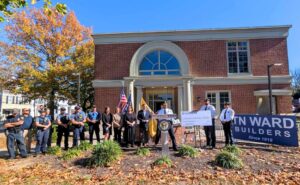For the first time since 2009, Haddonfield is creating a revised borough Master Plan. The process hones public priorities for its business district, housing plan, traffic circulation, and sustainability needs.
By Matt Skoufalos | August 24, 2023
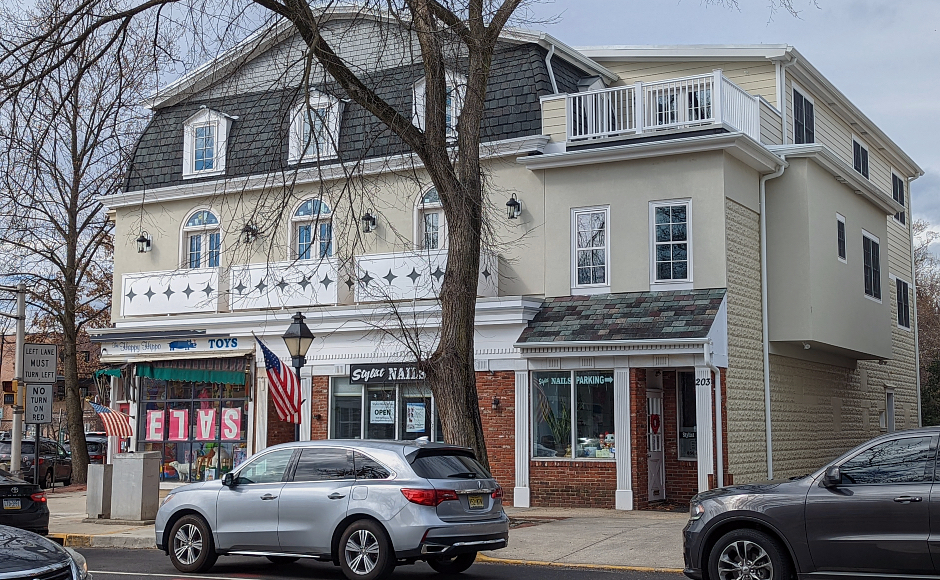
The Happy Hippo storefront at the corner of King’s Highway and Haddon Ave, Haddonfield. Credit: Matt Skoufalos.
In two years, the borough of Haddonfield will celebrate the 150th anniversary of its incorporation in 1875.
With that landmark on the not-so-distant horizon, the municipal government is inviting its residents to help establish a vision for the next half-century of life in the community, with a master plan update.
It’s been 14 years since Haddonfield last updated its master plan, a state-mandated document that informs the general direction of a municipality, decade by decade, across a number of key sectors.
Primarily, master plans are relied upon in discussions about land use and the development of local zoning ordinances. However, those conversations also incorporate related topics like housing, community facilities, vehicle circulation, recreation, historic preservation, and environmental sustainability.
The last update to the Haddonfield Master Plan occurred in 2009. By statute, the borough should have produced an update in 2019; however, that process was delayed as the local planning board sought to bring in a professional to help guide it, albeit after the annual budget had been finalized.
The report was further delayed by the novel coronavirus (COVID-19) pandemic, and finally resumed this year, at which point, the borough abandoned the idea of an update in favor of an entirely new report, Haddonfield Borough Administrator Sharon McCullough said.
To that end, the borough retained Philadelphia-based engineering consultancy Pennoni at a cost of $110,000 for the re-examination of its old plan and the writing of its new one, plus another $52,000 for the public engagement process surrounding it. That work has already been begun this spring, with an initial survey and public meetings, and it will continue in the fall.
In effect, the big question the review process asks is, “What do you want Haddonfield to look like in 50 years?” McCullough said.
“This involves everyone,” she said. “You may not understand why it involves you, but it is incredibly important for residents to participate in the surveys and the meetings.”
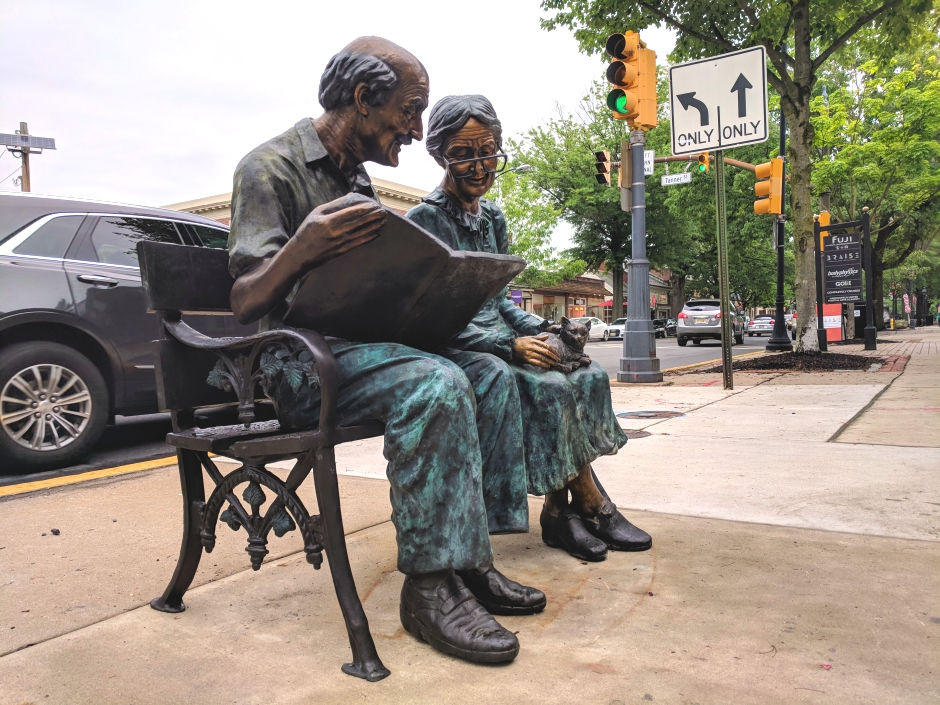
“Steadfast and Loyal” by sculptor Ken Ross on Kings Highway, installed by the Haddonfield Outdoor Sculpture Trust in 2018. Credit: Matt Skoufalos.
The four core areas with which the Master Plan concerns itself are: housing diversity, (environmental) resiliency, downtown economic viability, and circulation (ease of travel).
With the exception of resiliency, which is a new state mandate, the other priorities originated with borough elected officials, and were subsequently communicated to the planning board sub-committee, McCullough said.
These concepts represent various facets of life within Haddonfield, and the feedback solicited from residents invites them to consider how to plan for each aspect for the next half-century.
For example, on the subject of housing stock, the survey identifies familiar resident complaints — “high costs, tear-downs and build-outs, lack of space for new housing, inability to age in place, and lack of diversity in housing type” — while also introducing the concept of “missing middle,” or neighborhood-scale multifamily housing.
Another consideration, accessory dwelling units, could offer an opportunity for single-family homeowners to pass on their homes to family members while creating space in which to dwell by converting an existing space within the property into a live-in suite.
“The housing stock has to meet the needs of the people who want to live in your community,” McCullough said. “The whole point behind this first survey is to feel out what people would be interested in and what they would be willing to have.
“Having large, single-family homes doesn’t fit the smaller units that are coming up for the younger people, and it doesn’t allow the elderly to stay in place,” she continued. “Being able to create accessory dwellings, duplexes, townhouses, or quads, or some other structure [may]. How do we make use of what we have without losing the character of our town, but provide the housing stock that people are looking for?”
As a Complete and Green Streets town, Haddonfield is also working to explore ways in which to create opportunities for visitors and residents to safely traverse the borough regardless of their mode of transit. In addition to contemplating pedestrian, cyclist, and vehicle traffic, a Complete and Green Streets plan involves the incorporation of sustainable infrastructure, methods for managing stormwater, and a critical evaluation of foot and vehicle traffic circulation in the borough.
“There’s so much development going on in and around Haddonfield, and it’s having a massive impact on our traffic,” McCullough said.
“We can have an impact on how that traffic moves throughout our town.
“Should certain streets be one-way?” she said. “As people move towards green-friendly transportation, where do we put charging stations?
“Are we looking at the possibility of hydrogen-powered cars down the line?
“Bike trails? How do we fit our very small residential streets with bike lanes? There’s a wide variety of things that we’re looking at right now,” McCullough said.
The concept of resiliency largely means environmental sustainability, which ties in both to housing and circulation plans, but it also obligates the borough to consider how it will withstand future extreme weather events brought on by climate change.
“We’ve gotten hit with severe storms,” McCullough said; “we’re looking to see how do we address those? How do we deal with the heat that’s continually getting worse in the summer? Is there anything else we need to do with planning and zoning?”
The final of the four master plan components, the viability of the local downtown economy, invites residents to think about how business might be done in Haddonfield in the future, and ways in which the borough can support that growth. McCullough said this segment of the survey is probably the area that the subcommittee has least probed at the moment, and the one for which professionals are most seeking public feedback.
“Commerce is changing,” McCullough noted. “We’ve seen drastic changes. How do we keep our downtown? Looking at the zoning downtown, does it make sense? Are there things that should be tweaked to better take care of Haddon Avenue?
“They’re probably going to be looking at placemaking,” she said. “What does the area provide? Is there a way to be able to provide the different services? What brings people to a downtown as this world of commerce is changing?”
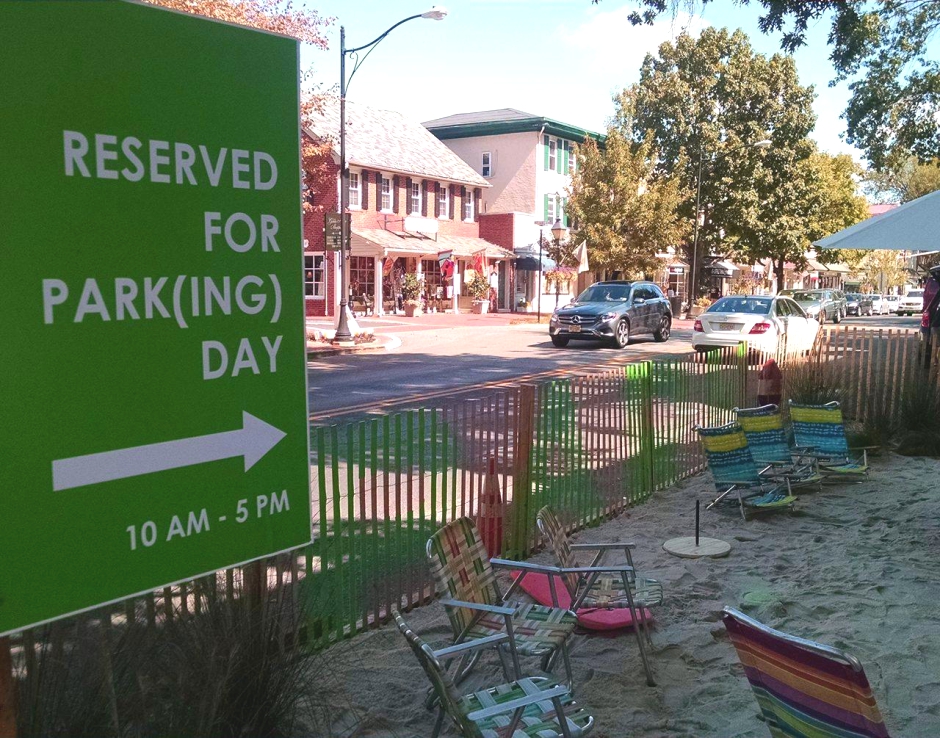
“Reserved for PARK(ing) Day” sign at Community Bikes and Boards in Haddonfield (2016). Credit: Matt Skoufalos.
As the public planning process continues throughout the coming months, residents have already begun contributing their feedback to the survey, and some of the concerns presented are familiar ones: high taxes, redevelopment, and packed public schools.
Others are more reflective of post-COVID-19-pandemic circumstances: walkability, a lack of socioeconomic diversity, and general frustration with petty crime and nuisances.
How these are addressed in the plan update remains to be seen, but McCullough said the remarks that have been submitted already are in keeping with the kind of input the borough has solicited.
“I think it’s great,” she said. “The participation has been good. We always want to get more. Some things, it’s not unexpected; some things are quite expected. But the willingness to participate and the variety [of remarks] that we’re finding is good for the community.”
